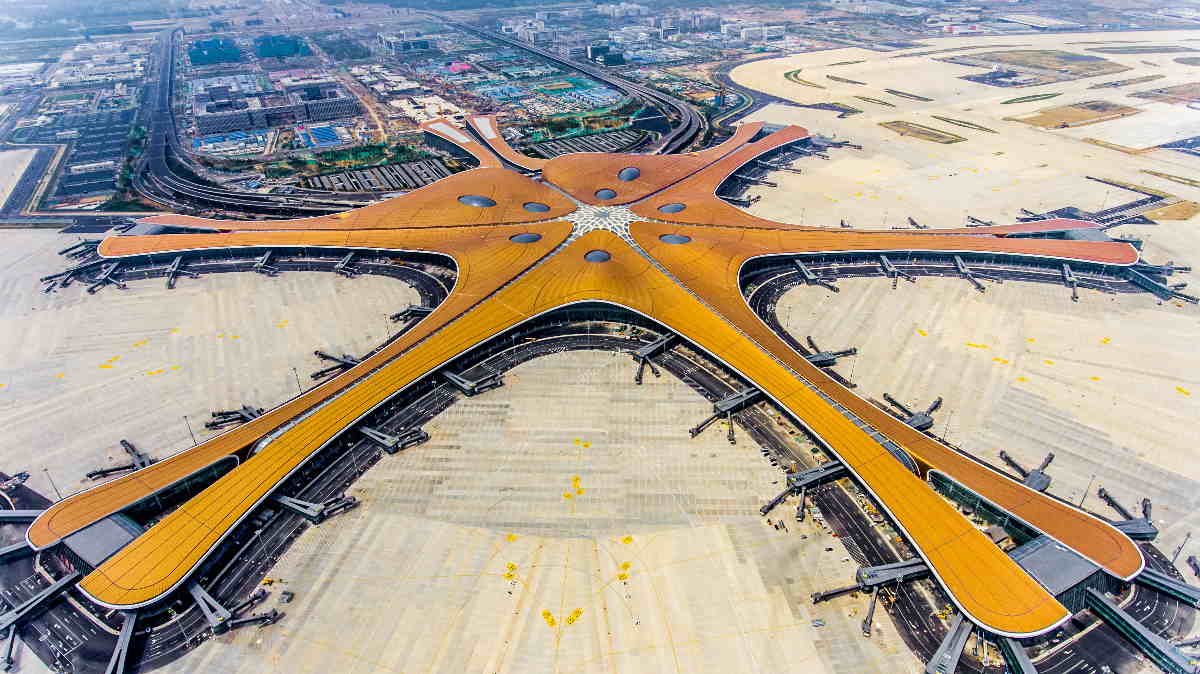Beijing's new futuristic airport that resembles a giant starfish – opened days before the country celebrates the 70th anniversary of communist rule – promises to transform the Chinese capital into a major Asian aviation hub.
Located 46 kilometres (29 miles) south of Tiananmen Square, Beijing Daxing International Airport will be able to handle 45 million passengers by 2021, with plans for 72 million by 2025 and 100 million by 2040.
It was opened by President Xi Jinping Wednesday, but had an immediate hitch when its maiden commercial flight – an A380 superjumbo heading to the southern city of Guangzhou – was delayed by nearly 30 minutes.
About a decade ago, Daxing was a sleepy suburb of dusty farmland and cramped quarters home to migrant workers building roads and skyscrapers in the city.
Now – with the airport code PKX – Daxing is seen as an embodiment of the "Chinese dream" Xi has offered his fellow citizens.
At 700,000 square metres (173 acres) – about the size of 100 football pitches – the new structure will be one of the world's largest airport terminals.
So far only China United Airlines has shifted their operations to the new hub but operations manager Wang Qiang said another seven domestic and eight international airlines would arrive in the "near future."
British Airways, Cathay Pacific and Finnair have already announced new routes to tap into its potential.
The SkyTeam alliance – which includes Delta, Air France and Dutch airline KLM – was also expected to move, along with local partners Eastern Airlines and China Southern Airlines.
The building was designed by Iraqi-British architect Zaha Hadid, who died in 2016.
The central atrium, with curves like a rolling landscape, is supported by eight giant columns and skylights filling the terminals with natural light.
Relatives and friends can also watch as their loved ones proceed to boarding gates through a viewing gallery.
An underground train station and metro line will allow travellers to reach Beijing city within 20 to 30 minutes.
Have money, will travel
The project cost 120 billion yuan (US$17.5 billion), or 400 billion yuan if rail and road links are included.
At full capacity, Daxing would be the world's largest single terminal in terms of traveller capacity, according to its designers.
Dozens of self-check-in counters – where travellers only need to scan their passports – have been setup alongside conventional airline counters to speed up operations.
Traveller Xie Hangyu said the check-in procedures were "very smooth and very convenient."
The current Beijing Capital International Airport – the world's second largest – is already overflowing, handling 100 million passengers last year.
With the opening of Daxing, Beijing joins a select group of cities, including Tokyo, London, Paris and New York, that have two long-haul international airports.
Air transport is booming in China as living standards increase along with peoples' desire to travel.
It is expected to surpass the United States (US) to become the world's biggest aviation market by the mid-2020s, according to the International Air Transport Association (IATA).
By 2037 the country will have 1.6 billion plane journeys each year – a billion more than in 2017, the organisation estimates. - AFP
